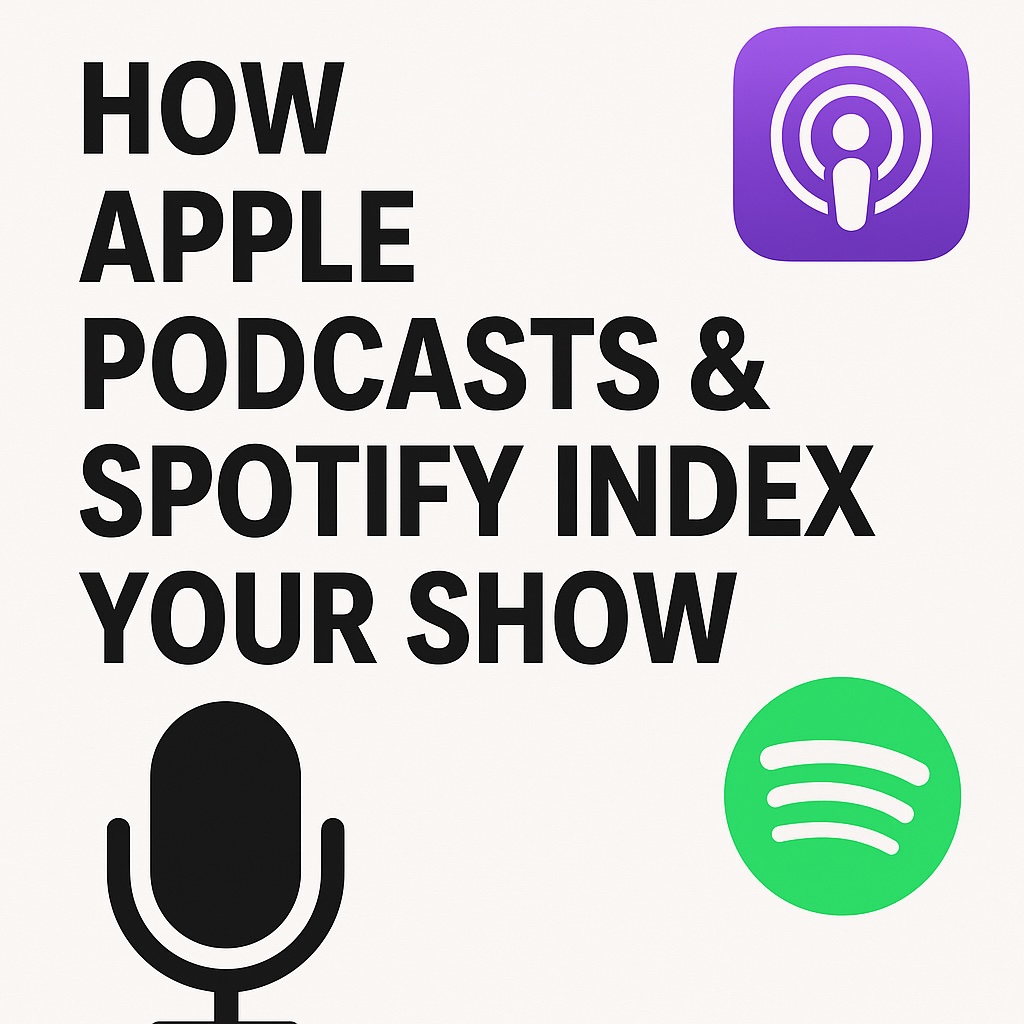How Apple Podcasts and Spotify Index Your Show (and How to Optimise for Growth)

When you launch a podcast, your show description, titles, and categories do far more than tell listeners what you’re about — they determine how (and if) people discover you on Apple Podcasts and Spotify. Both platforms index shows differently, and understanding these differences can make the difference between being buried and being found.
Why Indexing Matters
Apple Podcasts and Spotify both rely on a combination of metadata (the information you provide in your RSS feed) and listener behaviour to decide where your podcast appears in search results, browse categories, and charts. Getting this right ensures your show is not only published but positioned to grow.
What Apple Podcasts Indexes
Apple is still very much search-first. Its algorithm leans heavily on:
Podcast Title – the single most important field.
Author field – often overlooked, but including the host name plus brand keywords helps.
Description – Apple indexes up to 4,000 characters, but gives the most weight to the first two sentences.
Episode Titles – highly ranked in search.
Episode Descriptions – indexed, but less influential.
Categories – Apple’s structured categories/subcategories are used for browsing and chart placement.
In short: Apple rewards keyword clarity and penalises vague or spammy descriptions.
What Spotify Indexes
Spotify is more algorithm-first. While it also scans your metadata (titles, descriptions, categories), Spotify ranks shows more heavily on listener engagement:
Listen-through rate – do people finish your episodes?
Follows/Subscribes – the more consistent, the higher you surface.
Shares & playlist adds – signals that your content is sticky.
Spotify still uses titles and descriptions, but once listeners hit play, your performance data determines how widely you’re recommended.
How to Optimise Your Show for Both Platforms
1. Get Titles Right
Put your main keyword and promise in the show title.
Lead with topic/guest name in episode titles.
Avoid clever-but-vague titles.
2. Nail Your Description
Short Description (1–2 sentences): Front-load with who it’s for and why they should care.
Long Description (150–250 words): Expand with benefits, guest types, and topics. Use keywords naturally — no stuffing.
3. Choose Categories Wisely
Apple allows one main category plus subcategories. Be specific: “Business → Marketing” will serve you better than simply “Business.” Spotify follows similar structures.
4. Encourage Engagement
Especially on Spotify, growth comes from behaviour. Remind your audience to:
Subscribe/Follow
Share the show
Listen through to the end
Quick Pre-Launch Checklist
Show title includes keywords + clear benefit
Short description is concise and front-loaded
Long description written for humans, rich in natural keywords
Episode titles are search-friendly
Correct categories/subcategories chosen
Final Thought
Apple Podcasts rewards smart keyword choices. Spotify rewards audience engagement. Optimise for both, and you’ll give your podcast the best chance to be found — and followed.
